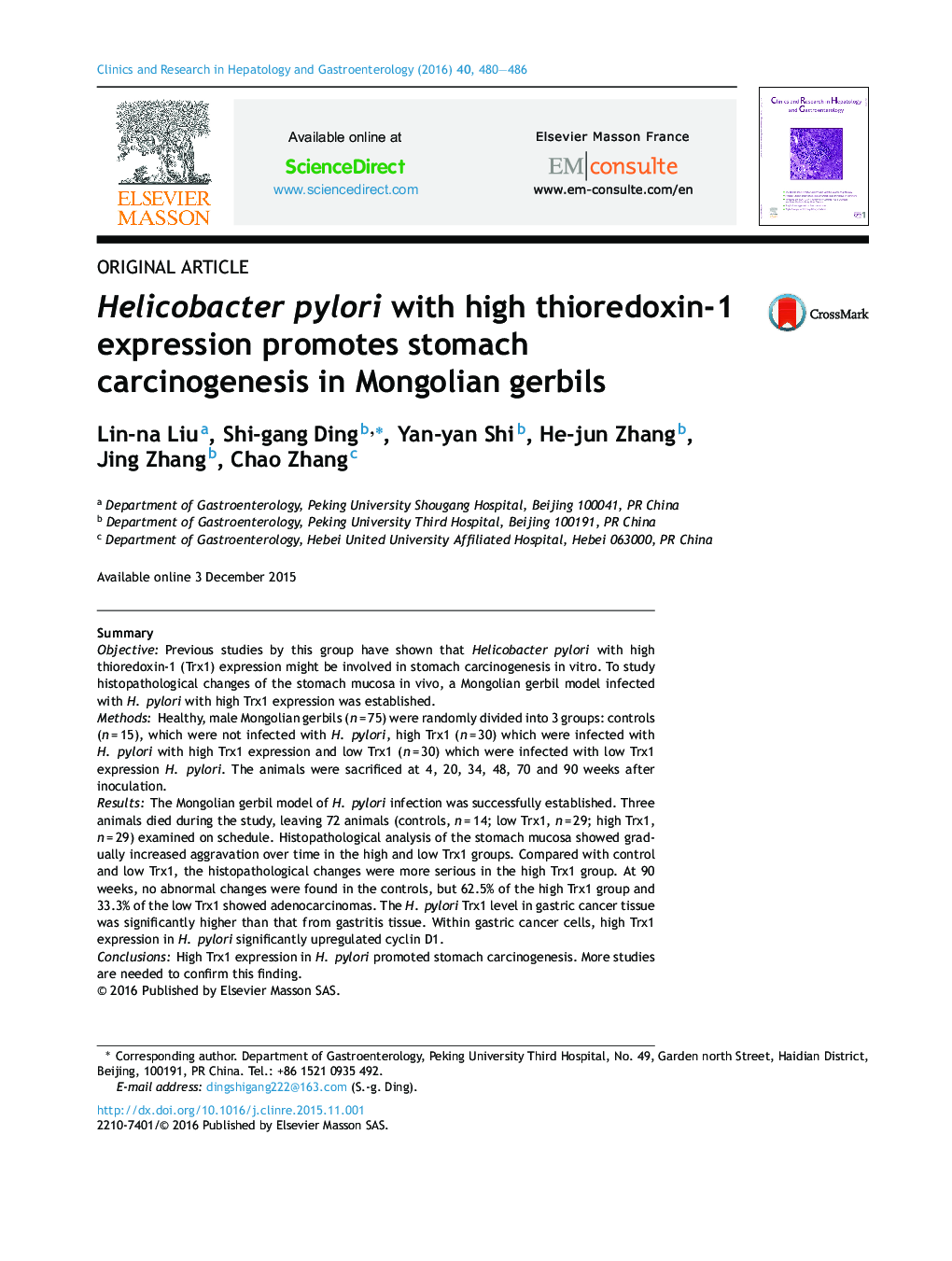| Article ID | Journal | Published Year | Pages | File Type |
|---|---|---|---|---|
| 5657822 | Clinics and Research in Hepatology and Gastroenterology | 2016 | 7 Pages |
SummaryObjectivePrevious studies by this group have shown that Helicobacter pylori with high thioredoxin-1 (Trx1) expression might be involved in stomach carcinogenesis in vitro. To study histopathological changes of the stomach mucosa in vivo, a Mongolian gerbil model infected with H. pylori with high Trx1 expression was established.MethodsHealthy, male Mongolian gerbils (n = 75) were randomly divided into 3 groups: controls (n = 15), which were not infected with H. pylori, high Trx1 (n = 30) which were infected with H. pylori with high Trx1 expression and low Trx1 (n = 30) which were infected with low Trx1 expression H. pylori. The animals were sacrificed at 4, 20, 34, 48, 70 and 90 weeks after inoculation.ResultsThe Mongolian gerbil model of H. pylori infection was successfully established. Three animals died during the study, leaving 72 animals (controls, n = 14; low Trx1, n = 29; high Trx1, n = 29) examined on schedule. Histopathological analysis of the stomach mucosa showed gradually increased aggravation over time in the high and low Trx1 groups. Compared with control and low Trx1, the histopathological changes were more serious in the high Trx1 group. At 90 weeks, no abnormal changes were found in the controls, but 62.5% of the high Trx1 group and 33.3% of the low Trx1 showed adenocarcinomas. The H. pylori Trx1 level in gastric cancer tissue was significantly higher than that from gastritis tissue. Within gastric cancer cells, high Trx1 expression in H. pylori significantly upregulated cyclin D1.ConclusionsHigh Trx1 expression in H. pylori promoted stomach carcinogenesis. More studies are needed to confirm this finding.
